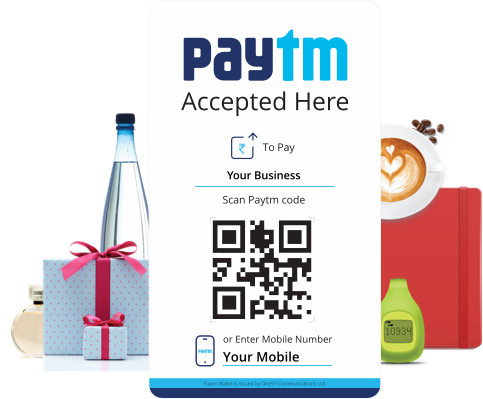
Against the backdrop of the demonetization exercise that shook up the Indian economy last November, there’s a major tussle brewing in the consumer banking space in India.
Vying for the chance to handle citizens’ money are two major sets of players – the traditional banks, and a new age of “Payments banks” – organizations that have received licenses to run partial banks, where they can accept deposits, offer services like debit cards and remittances, but not provide loans (at least not yet). It’s a battle between the old and the new that we’ve rarely seen the likes of elsewhere in the world.
Demonetization, arguably the most significant trigger of this race, was an involuntary exercise that the country underwent, where, overnight, the two largest currency denominations – The INR 500 and the INR 1,000 notes – were declared by the government as no longer being legal transacting tender.
Instead, the government would introduce a new set of INR 500 notes along with an entirely new denomination of INR 2,000 notes. INR 1,000 is approximately US $16, which in an Indian metropolitan city, would buy four movie tickets to a high-end cinema. Unfortunately, the execution of the exercise was patchy – there was a period of three months after the declaration of the old notes as illegal that the country was waiting for the new notes to be printed. The printing had begun during these months, but the demand far outstripped the supply, leading to daily cash shortages at banks and ATMs.
The move was initially portrayed by the Indian government as a way to combat undeclared income held privately by entities, outside of the country’s banking system, but when the move encountered criticism, the government changed the PR spin, reframing it into an effort to make India go cashless. In hindsight, this was a good reframe of the exercise, because it shifted focus from the troubled execution of the demonetization exercise to an India of the future where transactions are digital (read: ‘easy’), and accounted for.
The payments banks offer interesting competition to the traditional banks because of the profile of companies that have received these licenses. Two such prominent licensees are the Indian telecom giant, Airtel (founded in 1995, $14.5 billion revenues in 2016), and the e-wallet + online payment facilitator PayTM (founded in 2010, valued by some sources at $1 billion, in its latest fund-raise, with controlling ownership held by Alibaba’s parent company).
E-wallets like PayTM have a straightforward operational model – Effectively, they act like PayPal with an online store and a network of offline retailers that customers can buy from. Once the user loads money into her or his e-wallet, they can buy from a selection of products, both online, and from the network of retailers that the particular e-wallet has tied up with. If the consumer decides to withdraw money back into their bank accounts, they pay a transaction fee of anywhere between 1 and 4 percent of the amount they’re withdrawing.

Traditional banks in India have done well for themselves, but do struggle to maintain the rates of growth in customer acquisition that they’ve had at their peak. This is because most people that need banking services already have them, and those that don’t have these services haven’t had a need for them. When demonetization happened, it would have been a catalyst for more users to enter the banking system, but the e-wallet alternative stymied this.
This situation is unique to India in that the country’s population has millions of people that have shunned credit cards as well as bank accounts. There have been efforts by the government to encourage people to enter the banking system through small incentives that don’t solve the systemic issues. Among the issues is the fact that many of the routine transactions that people need can only happen in cash, for reasons that include not having reached a tipping point in terms of moving a critical mass of people into the banking system that would make non-cash transactions an alternative. There is also a mindset that a bank account is for savings, or for surplus money, whereas the on-ground reality of many Indians is that they survive on daily wages, where the money they earn is already spoken for in terms of debts owed to keep the lights on or to feed the family. As a result, the incentives, like lucky draws or other rewards, offered by the government to move people into the banking system haven’t been as impactful as the political promises that preceded them.
How did demonetization impact retail transactions?
Lets use the term ‘merchants’ to denote service providers as well as retailers of various sizes. Many of these merchants, from mom-and-pop stores to individual service providers like plumbers and electricians to rural farmers and beyond, had previously relied on cash transactions for their livelihood.
When demonetization struck, they quickly adopted PayTM’s e-wallet as a way to continue serving their customers. These merchants would have a QR code issued by PayTM that allowed their customers to scan the code, find the specific merchant listed on PayTM and instantly transfer money from their e-wallet to that of the merchant. The fact that the country was starved of paper currency for a period of nearly three months while the new notes were being printed pushed a large number of end-consumers as well into adopting e-wallets like PayTM to transact, closing the merchant-customer loop.
As a result, PayTM added millions of new subscribers within days of the demonetization initiative, with villages and towns of populations under 100,000 now contributing to 20 percent of PayTM’s revenue, compared to 2 percent prior to demonetization. The company estimates to have facilitated 200 million transactions of nearly $750 million in the month of January alone.
The effect of demonetization was twofold – a large number of Indians, thus far uncompelled to go cashless, suddenly found themselves warming up to the idea of doing digital transactions, whether by debit card or via e-wallet, incrementally trusting the brands of the major players like PayTM or Mobikwik. Secondly, the convenience of e-wallet transactions via mobile phones made the customers and merchants educate themselves, out of necessity, on how the system worked. Today, this has gotten gotten both customers and merchants a lot closer to now trusting a payment bank with a mobile interface, which is right in the wheelhouse for both Airtel and PayTM.
What’s happening with Payments Banks?
A Payments Bank is an entity sanctioned by the Reserve Bank of India (India’s central banking institution which controls the country’s monetary policy) that will allow customers to open accounts and will accept (as of the printing of this article) deposits up to INR 100,000. These banks may not give out loans or credit cards, but they can provide services like debit cards and ATM withdrawals, along with net and mobile banking
When PayTM launches its payments bank, it will cannibalize a part of its own e-wallet business – for example, transacting with a merchant using the payment bank account will eliminate the e-wallet transaction fee that PayTM previously imposed when the merchant or consumer tried to withdraw their e-wallet balance back into their bank accounts. It also impacts new customer acquisition for point-of-sale card swipe terminals which required the merchants to rent the actual hardware, have an internet connection, as well as pay a fee of about 2 percent of the transaction value to the banks offering the machines and to the card-issuing entity (Visa/Mastercard/Amex).
In offering the services of a bank, PayTM and Airtel will have to continue to provide a sense of trust to their target market – trust that they aren’t disappearing anytime overnight (even though the regulatory provisions already ensure that such a thing cannot happen) as well as trust that they are accessible, and not just a virtual storefront. Airtel has an advantage in that its thousands of retail outlets, spread across the country, where customers buy SIM cards, recharge their pre-paid voice and data plans etc, can double up as Airtel Payment Bank counters where a customer can create an account or withdraw money. Sitting in a busy part of Bangalore, I find that Airtel has 30 such payment points within a 2 mile radius of my location. A smaller city, with a quarter of Bangalore’s population, like Faridabad, has 60 of these.

That said, Airtel is still going to bankroll its initial customer acquisition by offering the highest interest rate of any Indian bank, payment or not, at 7.25 percent. According to a report, as of February 21, the big traditional banks (ICICI, HDFC and Axis) are holding at 4 percent.
How are traditional banks going to tackle this competition?
As it turns out, the traditional banks have gotten a leg-up from the Indian government, which is pushing unified interfaces to allow customers to make transactions across banks easily using their phones – similar to the way one could use a debit card issued by one bank at an ATM operated by another bank.
The United Payments Interface (UPI) (PDF), launched by the government, is a payments system that allows for instant mobile transfers between account holders of two different Indian banks. On the back of this, the government is deploying various technologies, like the BHIM (Bharat Interface for Money) app to allow end-consumers to transact between each other as well as with merchants. Like the venture-funded private e-wallet startups (PayTM, Mobikwik), the Indian government is aggressively promoting their digital cashless technologies (BHIM, Aadhar-enabled Payment System or AEPS and United Payments Interface).
And India is marketing these as aggressively as any well-funded B2C startup: As of February 22, the government has paid out INR 1530 million (~ $23 million) over the past four months through cashback rewards (such as lucky draws and referral schemes). The BHIM app currently has 17 million downloads in less than three months since its launch. The more successful the BHIM app is, the less that traditional banks have to worry about mobile payment banks eating their lunch.
Then there is the Bharat QR code – a competitor to the PayTM QR code that merchants have been displaying (especially since demonetization in November 2016). The advantage is that because it is government-backed (effectively a neutral third party), 15 major banks in India have already signed on to link the Bharat QR code into their existing apps. This will allow consumers to scan a merchant’s Bharat QR Code through their own bank’s app, and upon authorization, debit directly from their bank account. This eliminates the need for both parties to be a part of the same currency system (like it used to be for PayTM).
So, while payments banks like Airtel and PayTM are going to take steps to provide a trustable monetary transaction and banking experience, like traditional banks already do,the traditional banks themselves are rapidly moving towards adding on e-wallet like services, on mobile, like the challengers already do.
Where is all this going?
As with any economy, competition in the marketplace simply means more choice for the customer, and a plethora of incentives to attract them. India is going to see more such carrots dangled for each customer from both, the traditional banks that are cash-rich and the new players who will either subsidize the incentives from their other businesses, like Airtel will, or will use VC money to provide short-term incentives, as I predict PayTM will.
This is mostly a good thing – it will even spawn a number of industries, services and middlemen, ranging from online aggregators of banking products to help the end customer choose, to mobile phones optimized to facilitate these transactions (imagine phones that open the banking apps only if they were unlocked using the same biometric authentication provided when opening the bank account) to local touts helping the technologically-challenged navigate the world of banking apps.
This is the churning of an economy, and it’s a strong, albeit short term, signal of growth. What might not be as great is when the banks (payment or traditional) inevitably try to recover the monies they spent in acquiring customers, down the line, through all of the methods at their disposal whether it be dropping interest rates on deposits, charging fees for previously ‘free’ services, or lending at higher rates. Until then, the customer is going to have red carpets rolled out willy-nilly and I won’t begrudge us enjoying it while it lasts.
Get the TNW newsletter
Get the most important tech news in your inbox each week.




